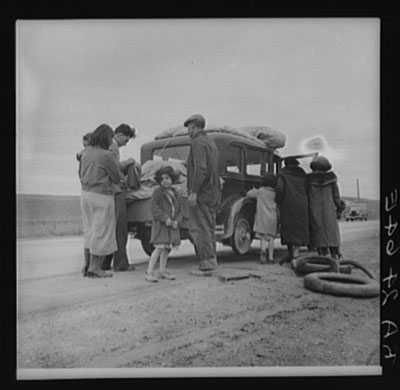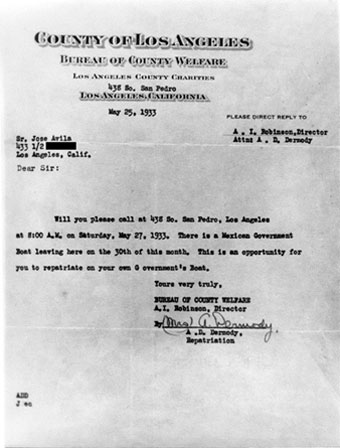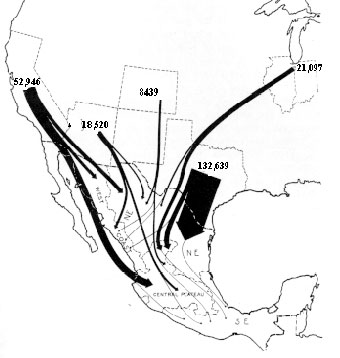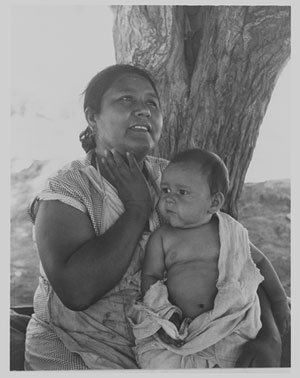
Source: "Migrants, family of Mexicans, on road with tire trouble. Looking for work in the peas." California, Dorothea Lange, Library of Congress
The Great Depression of the 1930s devastated the United States. This was a period of economic hardship for everyone. Along with extremely high unemployment and food shortages that affected all U.S. workers, Mexicans and Mexican Americans had to face an additional threat: deportation. As unemployment permeated the U.S., hostility toward immigrant workers grew, and the government began a program of repatriation to Mexico.
Examine the primary sources from the Mexican Repatriation period of the United States.

Source: "Migrants, family of Mexicans, on road with tire trouble. Looking for work in the peas." California, Dorothea Lange, Library of Congress
This is a photo of Mexican migrants who joined the many other migrant families who crossed the United States looking for work. The photo was taken by Dorothea Lange who is famous for chronicling the plight of migrant workers during the Great Depression.

Source: Mexican Deportation, Rockford Public Schools
This is a document alerting qualified Los Angeles residents of a voluntary opportunity for repatriation to Mexico.
Immigrants were offered free train rides to Mexico, and some went voluntarily, but many were either tricked or coerced into repatriation, and some U.S. citizens were deported simply on suspicion of being Mexican. Eventually, hundreds of thousands of Mexican immigrants, especially farmworkers, were sent out of the country during the 1930s.
Think about this:
If you were a resident of Los Angeles during this time period, how would you react to this notice?

Source: Mexican Repatriation Southwest and Midwest, University of Texas San Antonio
Map of repatriates from across the United States; While California had nearly 53,000, Texas had over 132,000 repatriates.
Examine the map above and answer the following questions:

Source: Mexican mother in California, Dorothea Lange
Dorothea Lange was a photographer who was famous for her photographs that chronicled the lives of migrant farmers and those looking for work during the Great Depression. In the photo above is a Mexican mother who Lange interviewed about the repatriation to Mexico and its impact on labor.
Read an excerpt from the interview below and answer the questions that follow in your notes: